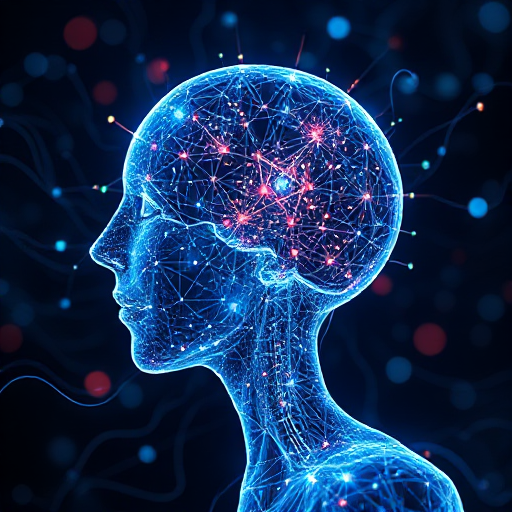Generative AI is revolutionizing the creative world, enabling individuals and organizations to produce stunning visuals, engaging text, and even videos with just a few prompts. As these technologies advance, their applications are expanding, reshaping industries and redefining what’s possible. Let’s explore some of the latest developments in generative AI and how they are impacting creativity across various domains.
The Future of Creativity: Advancements in Generative AI
Generative AI is revolutionizing the creative world, enabling individuals and organizations to produce stunning visuals, engaging text, and even videos with just a few prompts. As these technologies advance, their applications are expanding, reshaping industries and redefining what’s possible. Let’s explore some of the latest developments in generative AI and how they are impacting creativity across various domains.
1. Stable Diffusion XL (SDXL): Hyper-Realistic Image Generation
Stable Diffusion XL (SDXL) represents a new frontier in image generation. Unlike its predecessors, SDXL produces incredibly detailed and photorealistic images. This breakthrough has made it a go-to tool for industries like marketing, film, and gaming, where high-quality visuals are critical.
Key Features:
- Unmatched Realism: SDXL creates images with intricate textures, accurate lighting, and lifelike details.
- Customizability: Users can fine-tune outputs to match specific styles or themes, from surrealism to hyper-realism.
- Accessibility: Tools built on SDXL, such as DreamStudio, allow even non-experts to generate professional-grade visuals effortlessly.
Example Use Case: A fashion brand can use SDXL to conceptualize clothing designs, create marketing campaigns, and visualize photoshoots without needing physical samples.
2. GPT-4’s Multimodal Capabilities: Text Meets Images
GPT-4 has redefined AI’s capabilities by being able to process both text and images. This multimodal functionality allows for richer and more interactive applications.
Key Features:
- Image Analysis: Users can upload images and ask GPT-4 to interpret, analyze, or even generate captions.
- Enhanced Creativity: It combines text and visual inputs to create unique content, such as storytelling with embedded visuals.
- Broader Applications: From assisting designers with layout suggestions to analyzing visual data for researchers, the possibilities are vast.
Example Use Case: Educators can use GPT-4 to design interactive lessons that combine visuals and text, making learning more engaging for students.
3. Runway Gen-2: Text-to-Video Generation
Runway Gen-2 is pushing the boundaries of generative AI by enabling users to create videos from text prompts. This innovation is opening doors for content creators, advertisers, and filmmakers.
Key Features:
- Text-to-Video: Users describe a scene, and the model generates a corresponding video.
- Enhanced Editing Tools: Fine-tune videos by adding transitions, effects, or animations.
- Creative Freedom: Generate anything from animated sequences to live-action style clips.
Example Use Case: A startup can produce promotional videos for their products without the need for expensive equipment or large production teams.
4. Democratizing Creativity with Generative AI Tools
Generative AI tools are leveling the playing field, making professional-grade creative tools accessible to everyone, regardless of their technical expertise.
Popular Tools:
- Canva’s Magic Studio: AI-powered design tools that simplify graphic creation.
- Adobe Firefly: A suite of AI tools integrated into Adobe’s creative software, enabling users to generate text-based edits and artistic effects.
- Descript: AI-powered audio and video editing, streamlining post-production workflows.
These tools empower individuals to express themselves creatively without requiring extensive training or resources.
5. The Ethical Implications of Generative AI
As generative AI becomes more powerful, it also raises ethical questions. Issues like copyright infringement, deepfake misuse, and AI-generated misinformation are hot topics in the tech community.
Key Ethical Considerations:
- Ownership: Who owns the rights to AI-generated content?
- Transparency: Should AI-generated works always be disclosed?
- Bias Mitigation: Ensuring outputs are fair and unbiased.
Organizations are now investing in frameworks and policies to address these challenges, ensuring responsible use of generative AI.
Conclusion: The Dawn of a Creative Revolution
Generative AI is no longer just a futuristic concept; it’s here, and it’s transforming creativity as we know it. Tools like Stable Diffusion XL, GPT-4, and Runway Gen-2 are empowering creators to push boundaries and bring their visions to life. While ethical considerations remain, the potential of generative AI to democratize creativity and drive innovation is undeniable. Whether you’re an artist, educator, or entrepreneur, now is the time to embrace these advancements and explore the limitless possibilities they offer.
